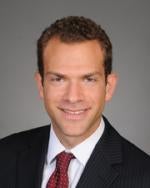We previously posted about the court’s decisions in United States ex rel. Martin v. LifeCare Centers of America, Inc., No. 08-cv-251, 2014 WL 4816006 (E.D. Tenn. Sept. 29, 2014) and United States v. AseraCare, Inc., No. 2:12-CV-245-KOB, 2014 U.S. Dist. LEXIS 167970 (N.D. Ala. Dec. 4, 2014), both of which permitted claims to proceed despite the government’s reliance on statistical samples to prove falsity.
Now, two other courts have endorsed—or at least refused to reject—the notion that a statistical sample can establish the falsity of claims for payment about which the government and relators have presented no direct evidence. In United States ex rel. Ruckh v. Genoa Healthcare, LLC, 11-cv-01303-SMD-TBM (M.D. Fla. Apr. 28, 2015), the relator moved in limine to admit evidence of a statistical sample that had not yet been created. As the defendant characterized the motion, it was “an effort to obtain th[e] Court’s ‘advisory opinion’ or ‘comfort order’ indicating” that if the relator’s expert conducts the sample, it will be admissible. Although the Court declined to engage in this speculative exercise, it rejected the defendant’s position that a sample could never be used to demonstrate falsity. In doing so, the Court cited LifeCare and United States v. Robinson, No. 13-cv-27-GFVT, 2015 WL 1479396 (E.D. Ky. Mar. 31, 2015), another recent district court case that relied heavily upon LifeCare in concluding that “statistical sampling methods and extrapolation have been accepted in the Sixth Circuit and in other jurisdictions as reliable and acceptable evidence in determining facts related to False Claims Act claims as well as other adjudicative facts.”
At this point, only a handful of district courts from two circuits have concluded that falsity can be established through a statistical sample. The decision in Ruckh contained almost no analysis at all, essentially kicking the can to trial. Meanwhile the Robinsoncase addressed the behavior of a single caregiver, which is far more susceptible to a valid statistical sample than a case addressing, for example, the impropriety of the medical decision-making of numerous caregivers alleged to have provided unnecessary treatment. See, e.g., Sergeants Benev. Ass’n v. Sanofi-Aventis, 2014 U.S. Dist. LEXIS 65714, at *60 (E.D.N.Y. May 9, 2014) (“even assuming, arguendo, that the chain of causation is not too attenuated, Plaintiff cannot prove causation through generalized proof . . . Plaintiffs’ ‘theory of causation is interrupted by the independent actions of prescribing physicians.’” (citing UFCW Local 1776 v. Eli Lilly & Co., 620 F.3d 121, 135 (2d Cir. 2010)).
Similar to the LifeCare decision, both the Ruckh and Robinson courts left open the possibility that any statistical sample would be subject to a Daubert challenge. Such a challenge could be substantial. Experts would still need to be able to convince the court—and potentially a jury—that the behavior of one biller can be extrapolated to a wide swath of patients, treatments and claims, and potentially to other non-sampled billers. This remains a tall order.
We will continue to monitor future developments on this issue.




 />i
/>i

